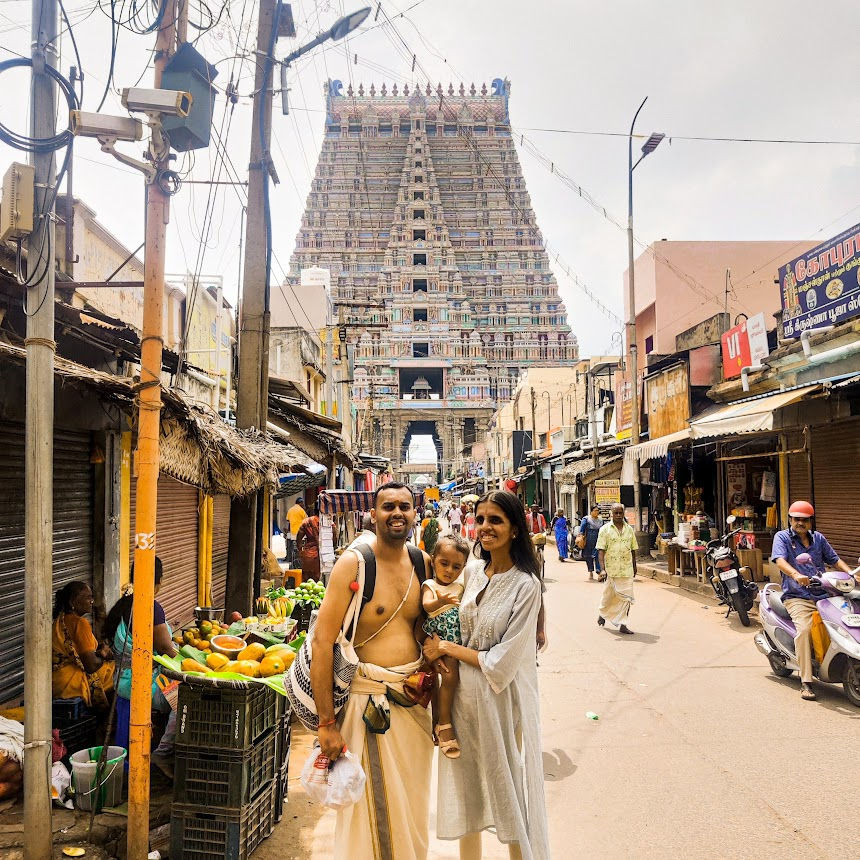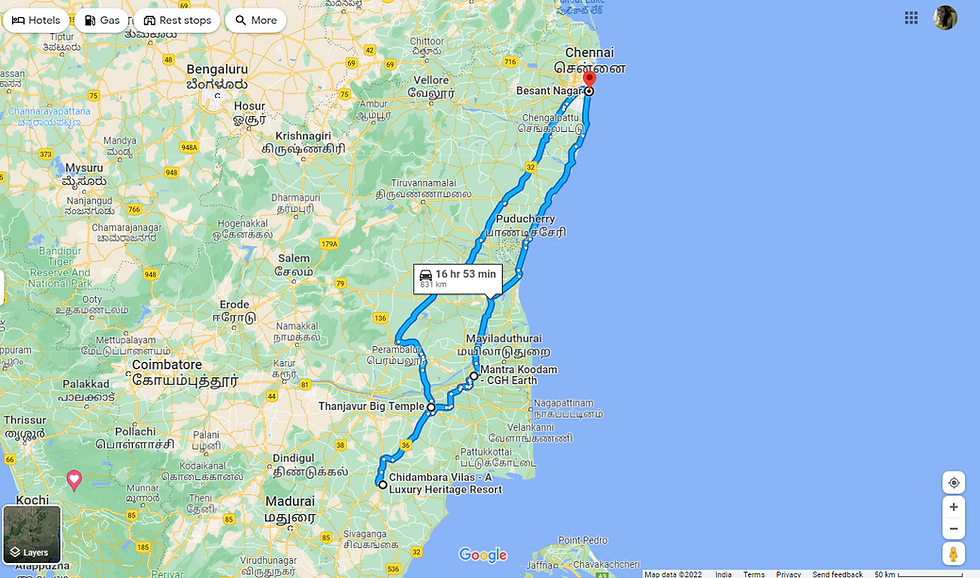Srirangam Ranganatha swamy temple - history
- Krithika Venkatakrishnan
- Dec 4, 2022
- 4 min read
Would you believe me if I told you that this temple in Tamil Nadu is probably almost 5000 years old? What if I told you that the presiding deity of this temple is as old as civilization itself? Well this seems to be what almost every article I read about the temple says and most of the devotees of this temple strongly believe and I too believe the same.
So in our recent road trip from Chennai to Kerala we made a stop at Trichy for 3 days and our plan was to visit the temple of Srirangam during our Wedding Anniversary. I too was the kid who was too cool for all these things and found visiting temples boring back then. But as I get older I do feel more drawn towards spirituality and also increasingly fascinated about Ancient temples, their history and all the science behind it.

This temple is considered the primary among the 8 Swayam Vyatka Vishnu temples we have. Its believed that the idol of Lord Vishnu appeared before Bharama as he was in his prayers and has been venerated by Lord Bharama himself. He later on handed over this idol to king Ikshvaku of Ayodhya, ancestor of Lord Ram and has been their family deity since then. Once Lord Rama defeated Ravana in Lanka, his brother Vibhishana had come to Ayodhya to attend the coronation of Lord Rama as a king. On a parting note, Lord Ram handed over this Idol to Vibhishana. On his return to Srilanka, Vibhishana placed this idol on the ground on the banks of the River Kaveri in its present location to perform some ablutions and puja. While he tries to pick it up again, the idol would not budge. Legend has it that lord Vishnu himself appeared before Vibhishana and told him that he wished to stay put in this location, A temple was built for this idol by the then Chola king Dharma Varma. So this is how old this temple actually is, dating back to the days of Ramayana. Ofcourse post that the idol as well as the temple was abandoned and found buried under earth by a successor of the chola king who came a few generations down the line. The idol was then recovered from under the ground and the present temple was built which too is at least 1500 to 2000 years old.
An interesting fact is that this is the second largest Hindu temple in the world only after the Angkor Wat temple in Cambodia and the largest functioning one in the world. The temple is highly sacred among the Vaishnavite sect of Hindus (Those who believe that lord Vishnu is the supreme god of this universe). A prayer in this temple is believed to cleanse one of all their sins and make way for moksha.
In the medieval period this temple was subjected to a lot of plunder and attack by the Delhi Sultanate who mainly wanted to break down the main idol and take away the Utsavar idol of the temple (An idol used for temple processions and can be moved from one place to another). Its heart rendering to note the sacrifices done by many hundreds of people to safeguard this temple and its idols and sanctity. The white Gopuram that you see in the below image is named Vellayie Gopuram, after a Deva Dasi, a Dancer who lured the sultanate and danced for him for the longest period until the idol was safely taken outside the temple and then she lured him to the top of this gopuram and pushed him down, She later jumped down from the same gopuram out of guilt of killing an individual.
Another interesting fact about this temple is that several centuries old mortal remains of the famous Hindu Theologist Ramanuja has been preserved within this temple using ancient techniques and he is also worshiped by the devotees of this temple.
Apart from all these spiritual significances, this temple is built in traditional and beautiful Dravidian architecture which never ceases to amaze you. The main Raja Gopuram which is the last structure was built as recently as in the 80s but retains the old world charm perfectly and blends in with the rest of this ancient temple which is more than thousand years old so easily. Now we did not explore the entire temple as we need a minimum of 2 to 3 days for that, So we just went to the shrine of the main deity, the main Goddess, Ramanuja and a couple of other shrines. The temple is huge and there is a lot of space inside to sit down and relax or chill. Photography is also allowed in these huge open spaces which have beautiful ancient carvings, though usage of camera and photography is not allowed anywhere near or within the inner sanctum of the temple.
Dhriti just loved that she had so much of space to move and run around and it was a task taking her from one shrine to another, but it was amazing to see how happy she was and this is one temple which babies will love visiting I feel.


















Commentaires